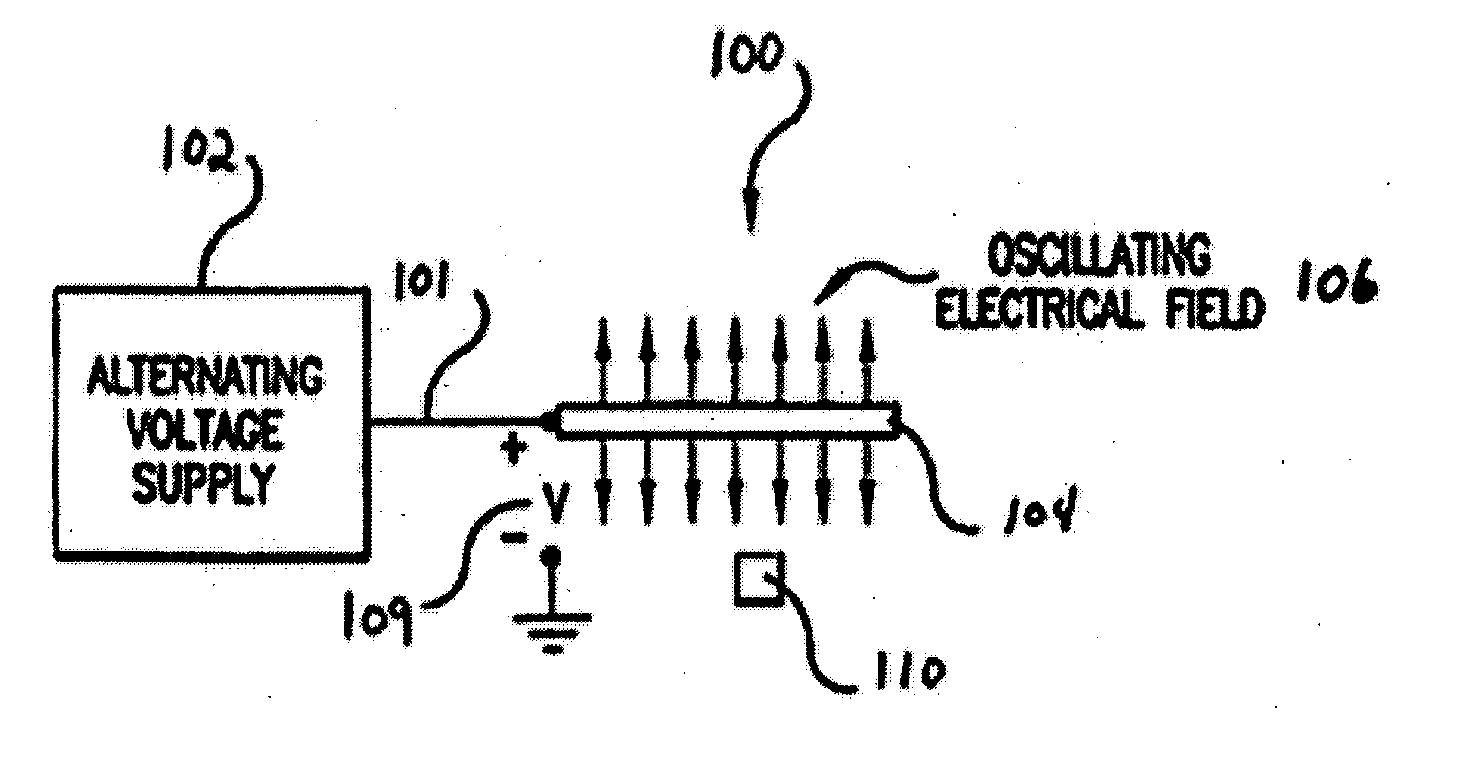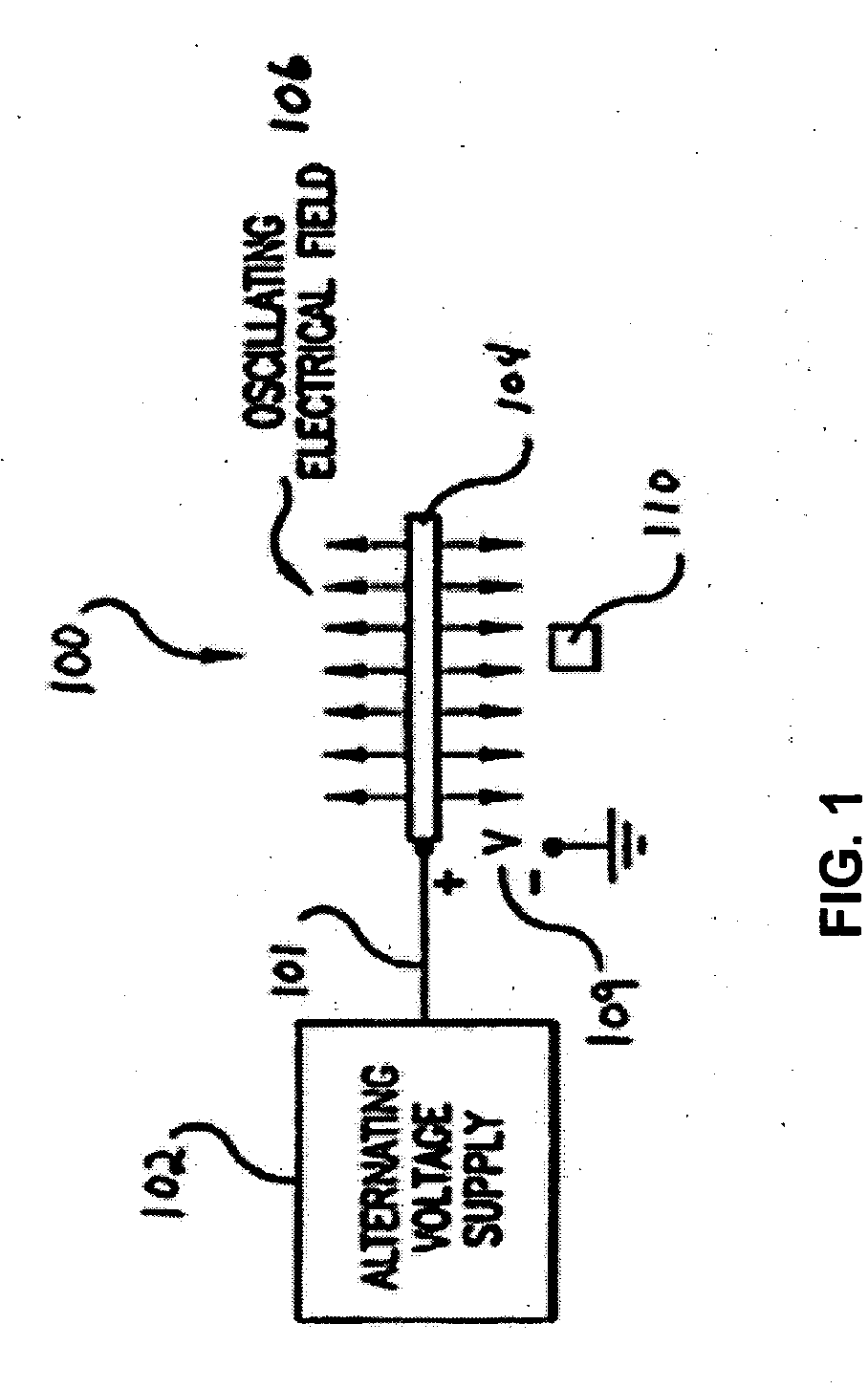Radiofrequency activated inkjet inks and apparatus for inkjet printing
- Summary
- Abstract
- Description
- Claims
- Application Information
AI Technical Summary
Benefits of technology
Problems solved by technology
Method used
Image
Examples
example 1
Preparation of a Radiofrequency-Activatable Styrene-Acrylic Ionomer
[0089] This example describes the production of a styrene-acrylic resin ionomer for use in radiofrequency-activatable RF inkjet composition. The solution was prepared from a commercially available styrene-acrylic resin, JONCRYL™ 682. JONCRYL™ 682 is a low molecular weight styrene-acrylic resin available from Johnson Polymer, Sturtevant, Wis. JONCRYL™ 682 has an acid number of 238 mg KOH / g, glass transition temperature of 56° C. and a weight average molecular weight of approximately 1700. An amount of 25.424 parts by weight of JONCRYL™ 682™ was neutralized with 7.926 parts of a 85 wt. % active potassium hydroxide pellets and 66.649 parts water. The resulting neutralized batch was then heated to 80° C. under nitrogen and agitated for 3 hours until a clear mixture was obtained. The resulting solids of the mixture was 30% and pH of 13.3.
example 2
Preparation of RF Inkjet Composition from a Styrene-Acrylic Ionomer
[0090] This example describes the production of radiofrequency-activatable black inks from the ionomer of Example 1. Six inkjet inks are made from a commercially available ink to which the ionomer of Example 1 is added. Three inks also include glycerol as an organic polar carrier. The ink formulations (I1-I6) for each of the six inkjet inks are provided in Table 1. The amount of each component in Table 1 is given in wt. %, based on the total weight of the ink formulation.
TABLE 1INK FORMULATIONSI1I2I3I4I5I6Water50-90 43-7738-6850-90 43-77 38-68Isopropanol0-15 0-13 0-110-15 0-13 0-11Butylene Glycol0.1-15 0.75-13 0.75-12 0.1-15 0.75-13 0.75-12Glycerol0 0 01.3 3.86.3Ionomer515253.7511.2518.75Carbon Black1-150.5-13 0.75-7.5 1-150.5-13 0.75-7.5
example 3
Preparation of RF Inkjet Composition from a Styrene-Acrylic Ionomer
[0091] This example describes the production of radiofrequency-activatable inks from the ionomer of Example 1. Six inkjet inks are made from a commercially available ink to which the ionomer of Example 1 is added. Each of the inks include glycerol as an organic polar carrier. The ink formulations (I7-I12) for each of the six inkjet inks are provided in Table 2. The amount of each component in Table 2 is given in wt. %, based on the total weight of the ink formulation.
TABLE 2INK FORMULATIONSI7I8I9I10I11I12Water70-90 60-77 53-68 70-90 60-7753-68 Isopropanol0-5 0-4 0-4 0-5 0-40-4 Ethylene Glycol0-100-9 0-8 0-100-90-8 Glycerol5-105-105-106.5-11.5 8-12.510-14 Ionomer515253.7511.2518.75Water Soluble Dye5-10 4-8.5 4-7.55-10 4-8.5 4-7.5
PUM
| Property | Measurement | Unit |
|---|---|---|
| Temperature | aaaaa | aaaaa |
| Percent by mass | aaaaa | aaaaa |
| Weight | aaaaa | aaaaa |
Abstract
Description
Claims
Application Information
 Login to View More
Login to View More - R&D
- Intellectual Property
- Life Sciences
- Materials
- Tech Scout
- Unparalleled Data Quality
- Higher Quality Content
- 60% Fewer Hallucinations
Browse by: Latest US Patents, China's latest patents, Technical Efficacy Thesaurus, Application Domain, Technology Topic, Popular Technical Reports.
© 2025 PatSnap. All rights reserved.Legal|Privacy policy|Modern Slavery Act Transparency Statement|Sitemap|About US| Contact US: help@patsnap.com



